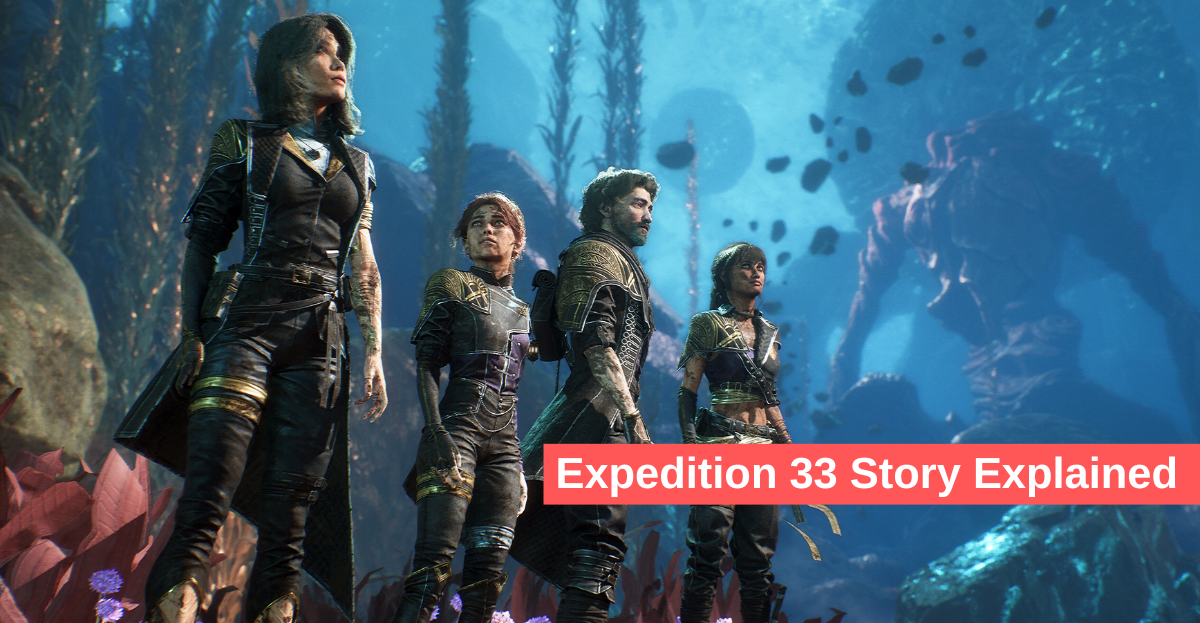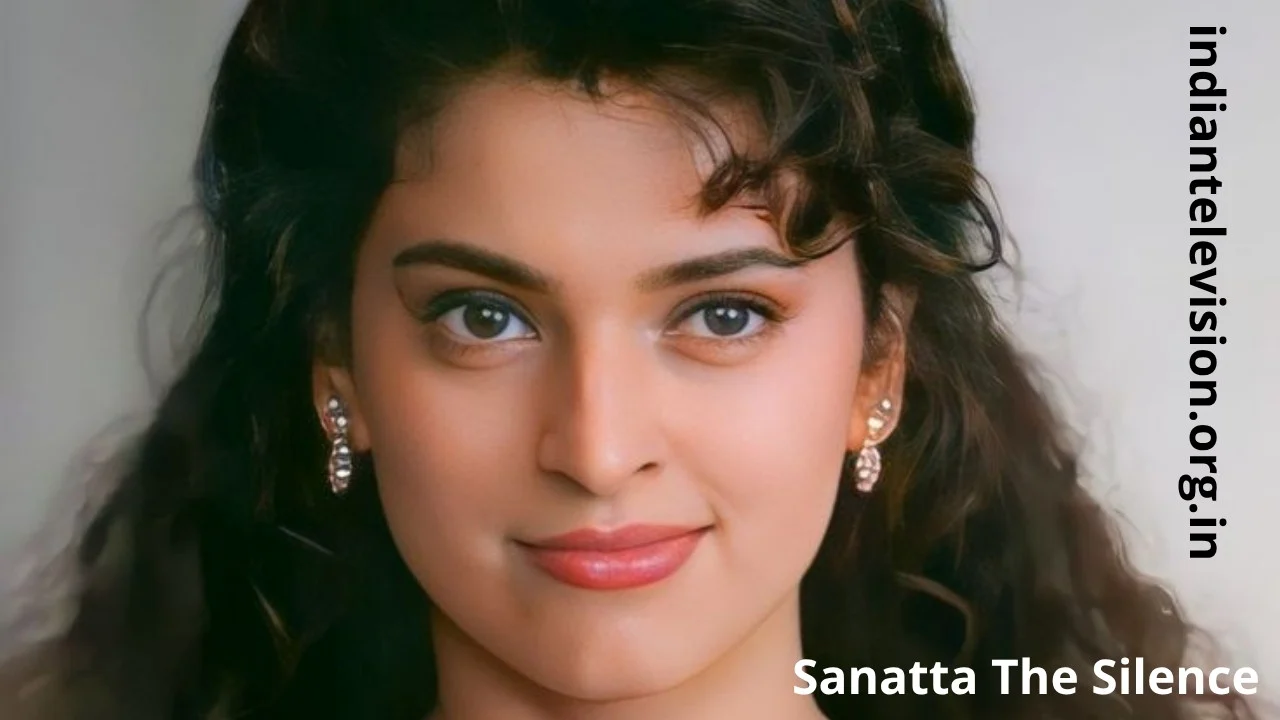Expedition 33 Summary
French indie studio Sandfall Interactive made Clair Obscur: Expedition 33, a turn-based RPG that came out in April 2024.
The game is set in a strange, painted world that is based on French history and Belle Époque art. Players follow Expedition 33, a group from the floating city of Lumière, as they try to stop the Paintress.
Every year, she paints a number on her monolith to erase people who reach a certain age. The number goes up to 33 this year.
The trip starts out as a survival mission, but it turns into a deep, sad story about loss, creativity, and the line between reality and fiction.
Instead of long explanations, the story unfolds through exploration, environmental cues, subtle dialogue, and journal entries. Players put the story together on their own.
The world of the game is called the “Canvas,” and it’s a living painting where the brushstrokes change the landscapes.
Things left over from past trips, like Expedition 68’s doomed camp in Flying Waters, serve as ghostly markers. You can change the leader of your party and change your clothes, but the real depth is in the emotional stories.
OpenCritic gave Expedition 33 a 92% rating, and it sold more than 2 million copies in its first 12 days. Critics and creators like Hideo Kojima praised the graphics, music, and depth of the themes. In January 2025, Story Kitchen said they would make a live-action version.
The Core Plot: A chronological breakdown (big spoilers)
Part 1: The Gommage and the Formation of the Expedition
In Lumière, people watch the “Gommage,” where the Paintress paints a number on her faraway monolith. People who are that age or older turn into smoke. Panic spreads as the number reaches 33.
Gustave, a 32-year-old engineer and guardian to 16-year-old Maelle, starts Expedition 33 with friends like the scholar Lune and the fiery Sciel.
To get to the Paintress, they have to go through floating islands, black voids, and colorful ruins.
At first, the game is all about exploring and finding new things. The clues from failed missions show that the Paintress is not evil, but a force that will always cause things to break down.
Act 2: Doppelgangers, Breaks, and Secrets
The group meets “Dessendres,” ghostly doppelgangers that attack them and show that reality is breaking down.
Maelle starts to have visions and memory gaps, which show that she is a “painted” being kept alive by leftover “Chroma,” the essence left by creators.
The members of the expedition have emotional problems: Gustave is having trouble with his protectiveness of Maelle, Lune is learning forbidden knowledge, and Sciel is dealing with her quick temper.
The world itself is shown to be a Canvas made from pain. Aline Dessendre is the Paintress, and the Gommage is more of a spiritual wound than a punishment from God.
Act 3: The Fight Between the Canvas and the Monolith
The game world is really Verso Dessendre’s Canvas, which kept his soul safe after a house fire.
The Dessendre family, who were painters with the rare ability to make art come to life, made this world as a way to heal. To save a part of himself, Verso put his essence into the Canvas.
Aline, the Paintress, paints numbers every year to keep her son from getting older and hurting her. Maelle is the reincarnation of Verso’s youngest sister, Alicia, but she doesn’t know where she came from.
Gustave stands in for the father, Renoir, and other party members show how families work or how expeditions work.
At the Monolith, players face illusions, signs of grief, and journal entries about the fire. Players can choose to keep or take apart the Canvas after they win.
Endings: Verso vs. Maelle Ending (Keep the Canvas)
Maelle keeps the Canvas and becomes the new Paintress. The painted world lives on, and Lumière’s people become free.
Aline and the Dessendres are still stuck, which makes the Canvas look a little less bright. Fans like this ending because it gives them hope.
Ending Maelle (Dissolution)
Maelle wipes the Canvas clean, letting Aline grieve in the real world. The painted world fades away, and the people on the expedition disappear, but their souls go back to the Dessendres.
The family quietly mourns Verso, which shows how real people deal with death. Critics like this ending because it doesn’t let people deny what happened.
With New Game+, players can go back and see hidden lore, Dessendre portraits, and different outcomes of expeditions.
Art, grief, and humanity are some of the themes.
Expedition 33 looks at trauma and escaping from it. The Canvas shows how people “paint” their realities to deal with grief, which can sometimes make them lose themselves. Family ties, sacrifice, denial, and enabling are all very important.
Chroma stands for the unique mark that creators leave on their work. The story goes against the rules of JRPGs by replacing winning with acceptance. The game has a deep, thoughtful quality thanks to its French impressionist influences and philosophical design.
Reception and Trends (as of October 2025)
Eighteen months after its release, Expedition 33 is still a hot topic online, especially on X (formerly Twitter). Fans love the OST, the graphics, and the complex female leads like Maelle and Lune.
People say that combat is “insanely fun” because it has both depth and ease. Endings cause arguments because players like the real emotional effects more than clear wins.
The game is often in the top three JRPGs of all time and is a strong contender for The Game Awards 2025, especially for its music and story. Developer recognition continues, with industry leaders praising Sandfall’s success with a team of 30 people.















